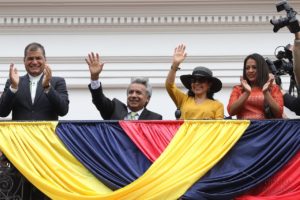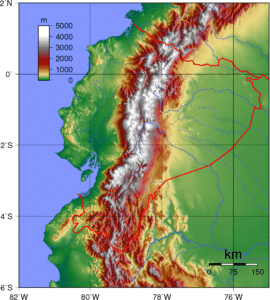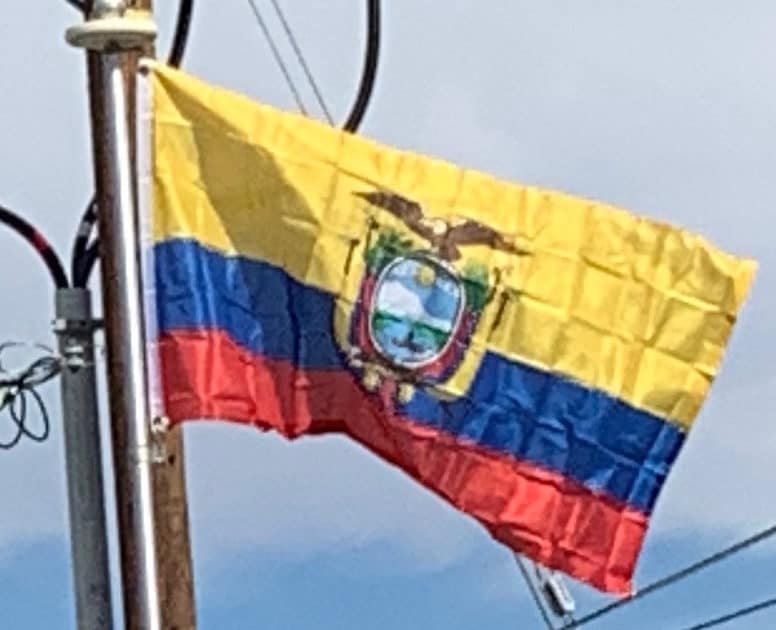The emergence of the Amerindian population as an active constituency has added to the democratic volatility of the country in recent years. The population has been motivated by government failures to deliver on promises of land reform, lower unemployment and provision of social services, and historical exploitation by the land-holding elite. Their movement, along with the continuing destabilizing efforts by both the elite and leftist movements, has led to a deterioration of the executive office. The populace and the other branches of government give the president very little political capital, as illustrated by the most recent removal of President Lucio Gutiérrez from office by Congress in April 2005. Vice President Alfredo Palacio took his place and remained in office until the presidential election of 2006, in which Rafael Correa gained the presidency.
In December 2008, president Correa declared Ecuador’s national debt illegitimate, based on the argument that it was odious debt contracted by corrupt and despotic prior regimes. He announced that the country would default on over $3 billion worth of bonds; he then pledged to fight creditors in international courts and succeeded in reducing the price of outstanding bonds by more than 60%. He brought Ecuador into the Bolivarian Alliance for the Americas in June 2009. To date, Correa’s administration has succeeded in reducing the high levels of poverty and unemployment in Ecuador.

After being elected in 2017, President Lenin Moreno‘s government adopted economically liberal policies: reduction of public spending, trade liberalization, flexibility of the labour code, etc. He also left the left-wing Bolivarian Alliance for the Americas in August 2018. The Productive Development Act enshrines an austerity policy, and reduces the development and redistribution policies of the previous mandate. In the area of taxes, the authorities aim to “encourage the return of investors” by granting amnesty to fraudsters and proposing measures to reduce tax rates for large companies. In addition, the government waives the right to tax increases in raw material prices and foreign exchange repatriations.
2019 State of Emergency:
A series of protests began on 3 October 2019 against the end of fuel subsidies and austerity measures adopted by President of Ecuador Lenín Moreno and his administration. On 10 October, protesters overran the capital Quito causing the Government of Ecuador to relocate to Guayaquil, but it was reported that the government still had plans to return to Quito.
Geography:
Ecuador has a total area of 283,561 km2 (109,484 sq mi), including the Galápagos Islands. Of this, 276,841 km2 (106,889 sq mi) is land and 6,720 km2 (2,595 sq mi) water. Ecuador is bigger than Uruguay, Suriname, Guyana and French Guyana in South America.

The country has four main geographic regions:
La Costa, or “the coast”: The coastal region consists of the provinces to the west of the Andean range – Esmeraldas, Guayas, Los Ríos, Manabí, El Oro, and Santa Elena. It is the country’s most fertile and productive land, and is the seat of the large banana exportation plantations of the companies Dole and Chiquita. This region is also where most of Ecuador’s rice crop is grown. The truly coastal provinces have active fisheries. The largest coastal city is Guayaquil.
